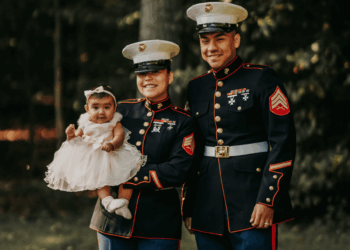Even though I wear the uniform for my country, my family is why I stayed in service. The education opportunities for my wife have been an excellent benefit over the years. She finished her degree with minimal student loans and then explored career opportunities she wouldn’t have considered otherwise.
Some education benefits for military spouses are expanding this year, so if you didn’t qualify in the past, it is worth rechecking now.
MyCAA
The My Career Advancement Account (MyCAA) Scholarship is a fantastic benefit! Eligible spouses can apply for up to $4,000 (up to $2,000 per year) for a variety of education expenses, including licensing, certification, and tuition costs. With the MyCAA expansion announced by the DOD last fall, eligibility now covers more spouses of enlisted service members (E-1 to E-9), officers (O-1 to O-3), and warrant officers (W-1 to W-3).
Depending on your career path and the institution, you can get a good chunk of a degree knocked out with MyCAA alone. Check out the program details and eligibility at https://mycaa.militaryonesource.mil/mycaa/.
Military spouse scholarships and grants
Don’t forget to look at military spouse scholarships and grants, too. There are so many of them that it’s hard to keep track. The most comprehensive list I’ve found is at https://www.katehorrell.com/military-scholarships/. Additionally, she has a ton of information on the Free Application for Federal Student Aid (FAFSA) and GI Bill benefit planning.
There’s also a nice search tool on the Military OneSource SECO page. I highly suggest researching scholarships or grants through your college of choice, local county resources, and state programs. Searching and applying for scholarships and grants can be well worth your time.
Transfer of Post-9/11 GI Bill benefits
This one can get pretty complicated, but transferring Post-9/11 GI Bill benefits is another way to pay for education. One downfall is that you can’t get the housing allowance if you already receive it in the form of BAH (sorry, no double dipping!). Also, the service member incurs a four-year service obligation (minimum 10 years of service total) when transferring their benefits to a dependent.
Make sure to check eligibility and request the transfer as soon as you’re eligible. It does not happen automatically! This is a great thing to consider when the service member hits six years in service. If the service member is planning to stay in anyway, you may as well “start the clock” sooner rather than later.
Check out the Veterans Affairs website and the DOD milConnect My Benefits Portal for more information.
Understand tax credits and benefits
Other key areas where spouses and service members have an advantage are federal and state tax credits and deductions. Because many of our entitlements are tax-free (BAH, BAS, etc.), military families may have an easier time qualifying for some tax credits and deductions. The most common programs are the American Opportunity Tax Credit (AOTC), which is generous but limited to four years, and the Lifetime Learning Credit, which is less generous but can be claimed for unlimited years (assuming other qualifications are met). Check for state deductions as well.
Make sure you check the eligibility requirements for enrollment status. It’s also a good idea to keep a file on what years you and/or your spouse claimed these benefits. Get with your tax professional to help determine if you qualify.
Fresh opportunities in 2025
The bottom line is that there are many educational opportunities for spouses. The Military OneSource website is a great first step to learning more as you consider your education goals for the future. Good luck with reaching your goals!
Read comments









































